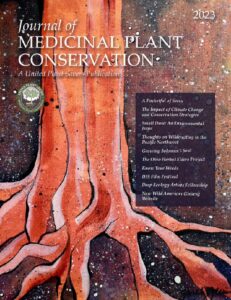by Timothy Oluwafemi Ajiboye

The National Center for Genetic Resources and Biotechnology (NACGRAB) is the focal point for genetic resources conservation, and the head of the National Centre is the secretary and the registrar of the national committee on variety registration and release.
Nigeria has a wide diversity of habitat, from arid areas to swamps through many types of forests. There are widely varied and diverse gene pools associated with various ecologies and habitats in Nigeria where over 4,600 plant species have been identified. Many of these plant species have food, medicinal, and veterinary uses (NACGRAB 2004).
Apart from the Genetic resources (food crops) that have orthodox seeds which were conserved in NACGRAB seed gene bank, NACGRAB has 12 hectares of land on which diverse plant species that have food, timber, and medicinal and ethnoveterinary medicinal uses. Within this 12 hectares of land, NACGRAB has medicinal gardens carved out for the purpose of ethno-medicinal and ethnoveterinary medicinal uses. Among the plants conserved in NACGRAB field with ethnoveterinary uses are Azadirachta indica, Khaya senegalensis, Vernonia amygdalina, Pilostigma thonningii, Psidium guajava, Zingiber off cinale, Carica papaya, Kigelia africana, Citrus aurantifolia, Aspilia africana, and Ricinus communis. The scope of herbal actions and diseases which plants conserved in NACGRAB field can be used for include cicitrisant, haemostatic, antiseptic, stimulant, tonic, drawing, dermal eruptions, inflammation, ulcers, control of parasites, bones, limbs, deformity, rickets, paralysis, epilepsy, convulsions, spasm, blood disorders, anemia, pain killers, arthritis, eye treatments, ear treatments, naso-pharyngeal, oral, pulmonary, cholera, liver, gallbladder, spleen, kidneys, anus, menstrual cycle, conception, lactation stimulants, abortifacients, parturition stimulants, venereal diseases, malaria, etc. (Burkill 1985).
There is an event called “Fascination of Plants Day” (FoPD)’ which comes up every two years. It is a time when various biodiversity conservation organizations exhibit plants. NACGRAB came fi rst in plant exhibition in the 2019 event that took place at the Federal University of Agriculture, Abeokuta, Nigeria. Fascination of Plants day is a global occasion consisting of over 1000 events held every two year across the globe. This program is coordinated by EPSO (European Plant Science Organization).
Dr. Timothy Oluwafemi Ajiboye earned his Bachelor of Agriculture, Master of Agriculture, and Doctor of Philosophy (Ph.D.) from the University of Ilorin in Nigeria. He has worked at the International Crops Research Institute for Semi-Arid Tropics as a Research Associate. He is currently an Assistant Director and Head of Field Genebank at the National Center for Genetic Resources and Biotechnology where he has written a thirty year Genetic Resources conservation plan. Dr. Ajiboye led the team of NACGRAB Scientists that got fi rst position in the plants exhibition in 2019.
ajiboyefemi2002@yahoo.com; phone: +2348023633385
REFERENCES
- Burkill H.M. (1985). The useful plants of West Tropical Africa Edition 2. Vol 1 Families A-D. Royal Botanic Gardens Kew 1985.
- Genetics Society of Nigeria (1999). Genetics and food security in Nigeria in the twenty fi rst Century. A 25 year commemorative Publication of the Genetics Society of Nigeria (1974-1999) (Eds) Gbadebo Olaoye and D.O Ladipo. pp 208
- NACGRAB (2004). National Centre for Genetic Resources and Biotechnology unpublished report 2004. Contributors M.B.Sarumi, D.O.Ladipo, L.Denton, E.O Olapade, K. Badaru and C.Ughasoro. pp103
- Toyang N.J, J. Wanyama, M. Nuwanyakpa and S.Django (2007). Ethnoveterinary medicine. A practicalapproach to the treatment of cattle diseases inSub-Sahara Africa. Agromisa Foundation and CTA, Wageningen, 2007.





